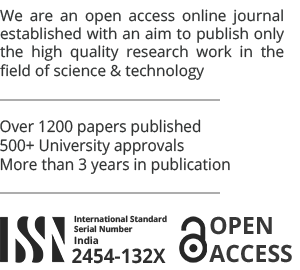Research Paper
Robot control through voice recognition using LabVIEW
Published by: K. Manu Subhash, Dr. M. C. Chinnaaiah, I. B. S. N. Varma, G. Abhiram Varma
Full Details
Research Paper
Design and fabrication of ceiling fan
Published by: Kiran Thorve, Sachin Gadhave, Prasad Gaikar, Amol Desai, Amey Sakre
Full Details
Research Paper
The relationship between false discharge of gaseous fire suppression systems and airborne dust
Published by: Hatem Aldhubaib
Full Details
Research Paper
Weather prediction using Machine Learning
Published by: Harsh Agarwal, K. Sai Charan, S. Harsha Vardhan, J. Ashok Kumar, P. Someshwar Goud, Vamshi Krishna
Full Details
Research Paper
Platform to improve the reachability of web based advertisement
Published by: V. Karunai Arasu, T. M. Lakshme Prabha, S. Dineshwaran, R. Muralidharan
Full Details
Review Paper
A review of Coronavirus 2019 (COVID – 19)
Published by: Archana Salunkhe, Vishal Galave
Full Details
